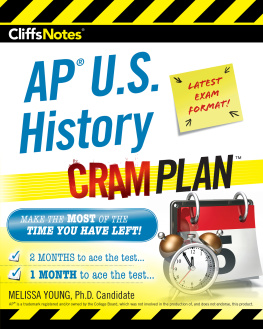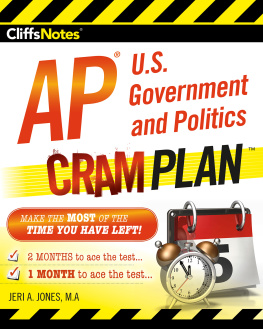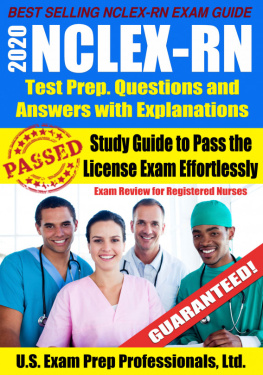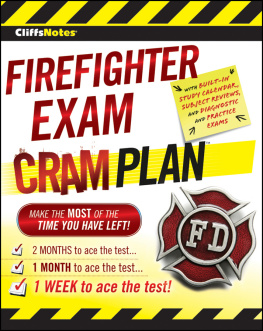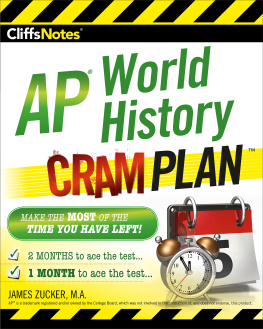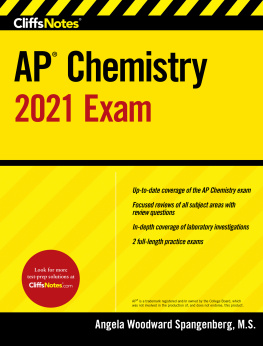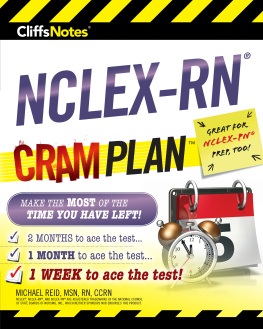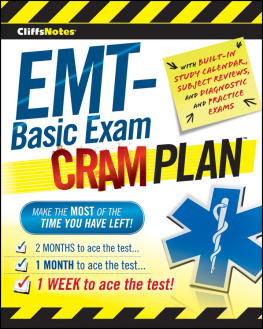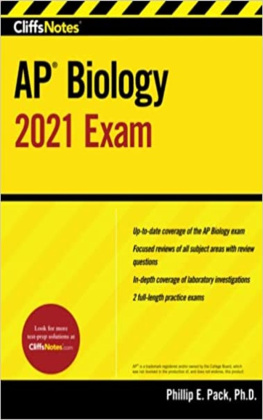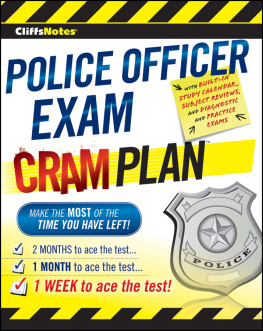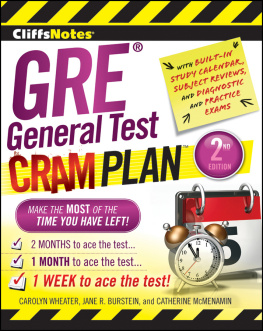Table of Contents

About the Author Melissa Young holds an M.A. in both history and English, and is currently a Ph.D. candidate at the University of Alabama in Tuscaloosa, where she specializes in modern American history. Acknowledgments This book would not be possible without the education provided me by the outstanding professors of the University of Alabama History Department and the hard work of my contributing author/editor Joy Gilmore and all of the editorial staff at CliffsNotes. Dedication I would like to dedicate this book to my husband, Martin, whose support and encouragement has been and continues to be invaluable to all of my work. | Editorial Executive Editor: Greg Tubach Senior Editor: Christina Stambaugh Copy Editor: Lynn Northrup Production Editor: Jennifer Freilach Technical Editor: Michael H. Kim Proofreader: Susan Moritz |
CliffsNotes AP U.S. History Cram Plan TM
Copyright 2019 by Houghton Mifflin Harcourt Publishing Company
All rights reserved.
Library of Congress Control Number: 2018941138
ISBN: 978-0-544-91504-6 (pbk)
eISBN: 978-0-544-91505-3
v1.0918
For information about permission to reproduce selections from this book, write to Permissions, Houghton Mifflin Harcourt Publishing Company, 3 Park Avenue, 19th Floor, New York, New York 10016.
www.hmhco.com
THE PUBLISHER AND THE AUTHOR MAKE NO REPRESENTATIONS OR WARRANTIES WITH RESPECT TO THE ACCURACY OR COMPLETENESS OF THE CONTENTS OF THIS WORK AND SPECIFICALLY DISCLAIM ALL WARRANTIES, INCLUDING WITHOUT LIMITATION WARRANTIES OF FITNESS FOR A PARTICULAR PURPOSE. NO WARRANTY MAY BE CREATED OR EXTENDED BY SALES OR PROMOTIONAL MATERIALS. THE ADVICE AND STRATEGIES CONTAINED HEREIN MAY NOT BE SUITABLE FOR EVERY SITUATION. THIS WORK IS SOLD WITH THE UNDERSTANDING THAT THE PUBLISHER IS NOT ENGAGED IN RENDERING LEGAL, ACCOUNTING, OR OTHER PROFESSIONAL SERVICES. IF PROFESSIONAL ASSISTANCE IS REQUIRED, THE SERVICES OF A COMPETENT PROFESSIONAL PERSON SHOULD BE SOUGHT. NEITHER THE PUBLISHER NOR THE AUTHOR SHALL BE LIABLE FOR DAMAGES ARISING HEREFROM. THE FACT THAT AN ORGANIZATION OR WEBSITE IS REFERRED TO IN THIS WORK AS A CITATION AND/OR A POTENTIAL SOURCE OF FURTHER INFORMATION DOES NOT MEAN THAT THE AUTHOR OR THE PUBLISHER ENDORSES THE INFORMATION THE ORGANIZATION OR WEBSITE MAY PROVIDE OR RECOMMENDATIONS IT MAY MAKE. FURTHER, READERS SHOULD BE AWARE THAT INTERNET WEBSITES LISTED IN THIS WORK MAY HAVE CHANGED OR DISAPPEARED BETWEEN WHEN THIS WORK WAS WRITTEN AND WHEN IT IS READ.
Trademarks: CliffsNotes, the CliffsNotes logo, Cliffs, CliffsAP, CliffsComplete, CliffsQuickReview, CliffsStudySolver, CliffsTestPrep, CliffsNote-a-Day, cliffsnotes.com, and all related trademarks, logos, and trade dress are trademarks or registered trademarks of Houghton Mifflin Harcourt and/or its affiliates. AP is a trademark registered and/or owned by the College Board, which was not involved in the production of, and does not endorse, this product. All other trademarks are the property of their respective owners. Houghton Mifflin Harcourt is not associated with any product or vendor mentioned in this book.
Table of Contents
Preface
Congratulations! Youve made the decision to take charge of the AP U.S. History course. This book can help you plan your course of study and prepare for the exam. You can use it as a quick reference guide, an in-depth resource, a source for practice, or a refresher on one or more topics in U.S. history. This guide contains a series of reviews that can supplement your textbook and your teachers lectures. Consider it an organized summary of a massive amount of U.S. history information that will allow you to organize and make sense of essential information necessary to be successful on the AP U.S. History (APUSH) exam.
CliffsNotes AP U.S. History Cram Plan is an easy-to-follow study guide that provides the maximum benefit in a reasonable amount of time. Although it is not meant to substitute for a formal high school AP history class, it provides you with important learning tools to refresh your understanding of the topics outlined in the AP course curriculum framework and key concepts. The skills and concepts defined in this book will not only help you pass the APUSH exam, but will also provide you with exam-oriented approaches and practice material to help you evaluate your strengths and areas of improvement. If you follow the lessons and strategies in this book and study regularly, you will deepen your understanding of U.S. history, which will strengthen your performance on the exam.
Navigating This Book
CliffsNotes AP U.S. History Cram Plan is organized as follows:
A general description of the APUSH exam, exam format, scoring, question types, chronological periods, reasoning skills, themes, frequently asked questions, and general strategies.
A study calendar that provides a detailed suggested plan of action for preparing for the APUSH exam 2 months before your exam.
A study calendar that provides a detailed suggested plan of action for preparing for the APUSH exam 1 month before your exam.
A shortened version of the APUSH practice exam in Chapter 13, the Diagnostic Test introduces you to the APUSH question types, evaluates your areas of strength and weakness to help you focus your study, and provides you with a baseline starting point.
Early Settlement of the Americas (1491 to 1607)
The Colonial Period (1607 to 1754)
Revolutionary America (1754 to 1800)
Early America (1800 to 1848)
The Civil War and Reconstruction (1844 to 1877)
The Gilded Age (1865 to 1898)
The Rise to Global Power (1890 to 1945)
The Post-War Era and the Cold War (1945 to 1980)
The Globalization Era (1980 to the Present)
Includes answers and in-depth explanations for multiple-choice questions, and sample responses and scoring guidelines for the short-answer, document-based, and long-essay questions.
How to Use This Book
Youre in charge here. You get to decide how to use this book. You can decide to read it from cover to cover or just refer to it when you need specific information. Most people find it useful to start by learning general reasoning skills, themes, and historical periods to develop a broad understanding of U.S. history before memorizing specific facts, concepts, and evidence.
Here are some of the recommended ways to use this book.
Create a customized study action plan. Be time-wise because your study plan depends on the total amount of time until the exam date. Preview the cram plan calendars in to organize your study time.
Read (and then reread) the Introduction to become familiar with the exam format, time periods, history disciplinary practices and reasoning skills, themes, question types, and test-taking strategies.
Take the diagnostic test () to assess your strengths and weaknesses.
Get a glimpse of what youll gain from a chapter by reading through the key concepts referenced at the beginning of each chapter.
Follow the recommended sequence of time periods (chapters 412). Within each chapter, take detailed notes on the pages of this book to highlight important facts and topics related to the APUSH key concepts.

